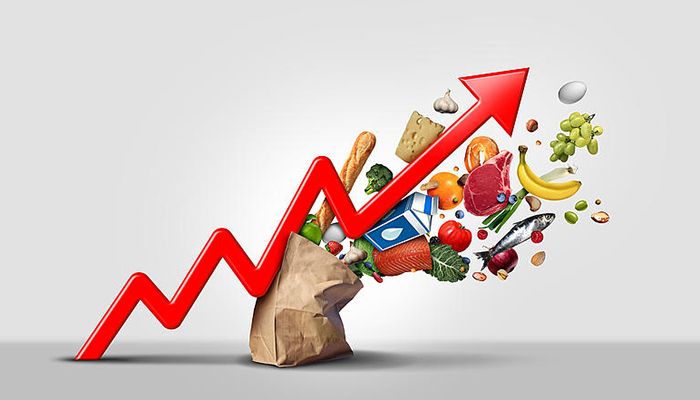
Gazi Tanjia, Translated By: Tausif Ahmed
Publish: 30 Oct 2023, 12:42 pm

Shrinkflation will make consumers suffer if there is no change in the quantity of goods even after inflation decreases || Representational Image
The brand of biscuits that we have been eating for a long time, on opening the packet, it seems that the biscuits are small in size, and the mold seems to have been changed. The size of the biscuit has been changed by keeping the hard plastic foil inside. That is, the number of biscuits has decreased.
At one time we became familiar with a slogan that said, big surprise in a small package. And now we see a small disappointment in the big package! In the period of monetary inflation, the commodity market is depressed. The price of goods is constantly increasing, but there is no way to control it. The dominance of syndicates has grown to such an extent that even when the government fixes prices, it has no effect on the market.
In addition, the prices of products that have not increased on paper have decreased in volume. Biryani packets have become smaller. The amount of meat inside is reduced. Singara, Puri, Piyaju, or Samucha, none of them are in their original shape. Looking at the current size, it seems that I have suddenly entered the world of Lilliput. The cake packet is fine but the size of the cake is not. 30 Tk cold drink is visible even if it is 50 Tk.
But for the invisible things that cannot sustain their existence, the consequences fall on the consumer. Poor people are unknowingly buying half the product at the same price. Not filling the stomach, and not meeting the nutritional needs. Once upon a time, 10 Tk packet of chips contained 25 grams of chips. That amount came down to 22 grams and now stands at just 15 grams. But the price per packet is the same. A mini pack of milk powder priced at Tk 10 used to contain 18 grams, which is now only 10 grams. Also earlier, a packet of Chanachur priced at Tk 10 contained 35 grams, which is now only 25 grams; And earlier a Tk 10 biscuit contained 55 grams, which is now only 39 grams.
Thus, the quantity of various products of all the big brands in the market has been reduced by 20 to 30 percent, while the prices remain the same.
The same is the case with stationery products or products like soap shampoo, and oil. But why such an invisible change? In business terms, the practice of reducing the quantity of a product while keeping the previous price unchanged is called 'shrinkflation'. It is considered a very clever strategy to increase the price of goods. Because it seems that the price of the product remains the same. But actually, the price per unit of weight is going up. It is a type of marketing strategy. which is used to maintain a balance between consumer purchasing power and company profitability during global inflation and economic downturns.
Needless to say, the consequence of shrinkflation falls heavily on the middle class. Because they have to spend twice as much to buy daily necessities. The demand that was met in one packet earlier now has to be bought in two packets. So the price has to be paid twice. Others are forced to reduce consumption of almost all products due to the effects of shrinkflation. And the effect of this is having a harmful effect on the health of many people. This can be of particular concern to family elders and women. Because they may have to rein in the use of essential products.
In a recent newspaper report, we see experts saying that the main victims of 'shrinkflation' will be those with low levels of education or math knowledge. Because even if the quantity of a product per packet is reduced, it will not be noticed by such people. Of course, even if the quantity is written on the packet, they may never notice it. But if they had to withdraw more money directly from their pockets, it would have shocked them.
Even the most highly educated people struggle to understand that even a small decrease in quantity, per kg of product, is proportional to a large increase in price. For example, reducing the quantity of a product by 50 percent while keeping the price the same means doubling the price of that product per unit or increasing the price by 100 percent. More simply, a 100 percent decrease in the quantity of a good is worse than a 100 percent increase in the price of that good. Because if the amount of a product is reduced by 100 percent, nothing is left!
So naturally there is room for the question of whether shrinkflation is cheating the buyers in a way or not, especially when the buyers naively think by buying a product at the previous price they are getting the same quantity as before. Although it is not possible to think of cheating in all cases, where the amount is mentioned on the product. What consumers are fooling is basically a shock to inflation. Shrinkflation will make them suffer if there is no change in the quantity of goods even after inflation decreases.
[The original article was in Bangla and published in the Weekly 'Shampratik Deshkal'. The main author of the article is the novelist Gazi Tanjia and it is translated by Tausif Ahmed]
Subscribe Shampratik Deshkal Youtube Channel
Topic : Inflation Shrinkflation Economy Bangladesh
© 2024 Shampratik Deshkal All Rights Reserved. Design & Developed By Root Soft Bangladesh